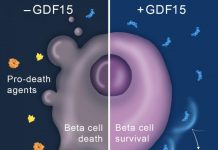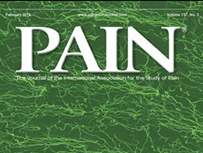May 2007 - University of Manchester researchers are ridding diabetic patients of the superbug MRSA by treating their foot ulcers with maggots.
Professor Andrew Boulton and his team used green bottle fly larvae to treat 13 diabetic patients whose foot ulcers were contaminated with MRSA and found all but one were cured within a mean period of three weeks, much quicker than the 28-week duration for the conventional treatment.
Professor Boulton, who published the results in the journal Diabetes Care, has now been awarded a £98,000 grant by Diabetes UK to carry out a randomized controlled trial to compare this treatment with two others.
"Maggots are the world's smallest surgeons. In fact they are better than surgeons - they are much cheaper and work 24 hours a day," Professor Boulton jokingly said.
"They have been used since the Napoleonic Wars and in the American Civil War they found that those who survived were the ones with maggots in their wounds: they kept them clean. They remove the dead tissue and bacteria, leaving the healthy tissue to heal.
Continue Reading Below ↓↓↓
"Still, we were very surprised to see such a good result for MRSA. There is no reason this cannot be applied to many other areas of the body, except perhaps a large abdominal wound."
Professor Boulton and his team, including senior nurse Ann Knowles, have used maggots to treat diabetic foot ulcers of patients attending the Manchester Diabetes Centre and foot clinics, as well as in in-patients at the Manchester Royal Infirmary, for ten years. More recently they found that many of their patients were suffering from MRSA-contaminated foot ulcers, with the rate doubling in a three year period, possibly due to overuse of antibiotics and the selection of broad rather than narrow-spectrum antibacterial agents. This led to their first study, funded by Central Manchester and Manchester Children's University Hospitals NHS Trust (CMMC) Chairman's Prize Award.
They treated 13 patients, aged 18-80 years with chronic foot ulcers that had suffered loss of feeling and reduced blood supply, with sterile free-range larvae of the green bottle fly Lucilia Sericata. They applied the larvae between two and eight times, depending on the size of the ulcer, for four days at a time, with pressure relieving dressings to protect them. No topical antimicrobial agents or growth factors were used on the study ulcer.
All but one of the patients was cleared of the superbug. During the treatment period, no adverse reactions were reported and there was a reduction in sloughy necrotic tissue and an increase in healthy, growing tissue on removal of the last larval application.
In their second study, he and his team will compare larval treatment with antibacterial silver dressings and the biogun treatment, which uses ionized air to create superoxide radicals and eradicate bacteria.
Professor Boulton said: "This is very exciting. We have demonstrated for the first time the potential of larval therapy to eliminate MRSA infection of diabetic foot ulcers. If confirmed in a randomized controlled trial, larval treatment would offer the first non-invasive and risk-free treatment of this increasing problem and a safe and cost-effective treatment in contrast to the expensive and potentially toxic antibiotic remedies."
The paper 'Larval Therapy: A Novel Treatment in Eliminating Methicillin-Resistant Staphylococcus aureus From Diabetic Foot Ulcers' is in Diabetes Care, Volume 30, Number 2, February 2007.
Source: University of Manchester










